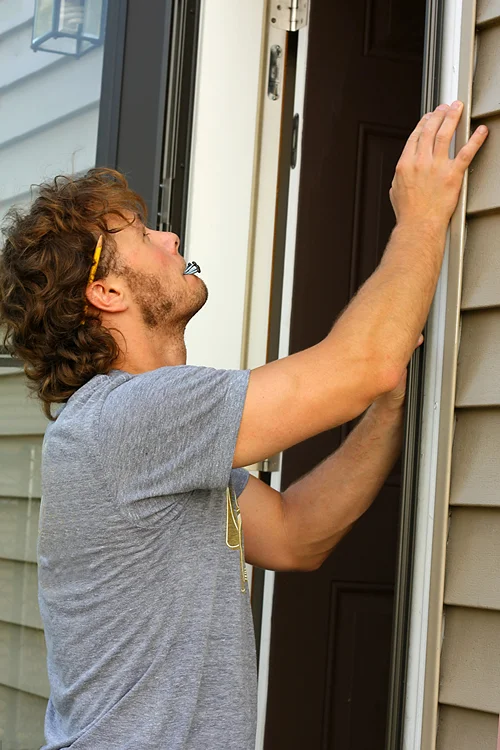How to Make Home Repairs Kid-Friendly After a Storm
When severe weather wreaks havoc across America, the impact is both financially and emotionally devastating. According to NOAA’s National Centers for Environmental Information (NCEI), 2024 saw 27 billion-dollar weather and climate disasters, nearly matching 2023’s record of 28 events.
These catastrophes resulted in 568 fatalities and approximately $182.7 billion in damages, highlighting the critical importance of being prepared for post-storm recovery.
When such disasters strike your home, the aftermath can be overwhelming, especially for families with children. While dealing with insurance claims and possibly consulting a hail damage attorney for fair compensation, parents must also maintain normalcy for their kids.
This guide will help you navigate post-storm repairs while keeping your children engaged and protected.
Creating a Safe Environment During Repairs
Creating a safe environment is paramount during post-storm repairs. Before work begins, establish designated “safe zones” for children, free from debris, sharp objects, and harmful materials. Use furniture or safety gates to create clear boundaries between work and play areas, allowing kids to observe from a safe distance.
According to UNICEF, ongoing safety should be prioritized by keeping everyone away from hanging wires and unstable structures. Floodwater is often contaminated, so keep children away. Debris can also be hazardous, so prevent children from playing around it. Maintain warmth and dryness by providing appropriate clothing.
Ensure drinking water comes from a safe source and food is thoroughly cooked, discarding anything potentially spoiled. Practice good hygiene by washing hands before eating and after using the toilet. Consult a doctor if anyone shows signs of illness.
During cleanup, exercise caution when pumping water, and watch for debris and electrical wires. Dry affected areas within 24-48 hours, ventilating well and discarding unsalvageable items. Limit children’s involvement in cleanup. Before their return, clean and disinfect toys, clothing, and living spaces. Discard belongings heavily contaminated by floodwater.
Teaching Moments: Age-Appropriate Involvement
Transforming storm repairs into teaching moments fosters resilience and practical skills in children. Younger children can safely participate in simple cleanups like gathering leaves or small branches under supervision and learning about nature and teamwork. Older kids can assist with basic tasks such as organizing tools or holding a flashlight, gaining hands-on experience.
Use the repair process to educate them about weather patterns, explaining how storms form and their impact. Teach them basic home maintenance skills, like identifying different types of tools and materials, and emphasize the importance of preparing for future storms.
This approach not only keeps them engaged but also empowers them with valuable knowledge and a sense of responsibility.
Documentation and Assessment: Making it Interactive
Transform damage assessment into an interactive learning experience. Provide children with notebooks to “document” damage through notes or drawings, helping them process the event constructively. Explain insurance basics in simple terms, teaching valuable lessons about preparation and responsibility.
As U.S. News advises, thorough documentation is crucial for insurance claims. Create a home inventory by using your phone to video your belongings. Walk through your house slowly, capturing furniture and possessions, including inside closets and cabinets. Pan slowly to allow for easy zooming and screenshots later.
Zoom in on appliance serial numbers to simplify replacements if necessary. This interactive approach engages children while ensuring comprehensive documentation for insurance purposes, maximizing the chances of receiving adequate coverage.
Working with Insurance and Legal Professionals
Recovering from substantial storm damage, especially hail, can be complex, and dealing with insurance claims adds another layer of complexity. Because insurance companies may try to reduce claim settlements, securing experienced legal counsel is essential.
According to VandenBout Law, a qualified attorney conducts comprehensive damage assessments, collaborating with industry experts to identify and properly value all damage. These legal professionals handle negotiations with insurance companies, using their expertise to advocate for fair settlements that cover the full extent of repairs.
While managing these legal matters, turn it into a learning opportunity for your children. Explain how insurance works using simple analogies – like comparing it to their piggy bank that helps during emergencies. Let them observe (from a safe distance) when inspectors or attorneys visit, encouraging them to ask questions about the process.
Create a simple chart tracking the repair progress, helping them understand how different professionals work together to restore their homes. If the insurance company disputes claims, explain to children how attorneys serve as helpers who ensure families receive the support they need.
This approach demystifies the legal process and teaches children about advocacy and community support systems.

Emotional Support Through the Process
Repair processes can be disruptive and emotionally challenging for children. Acknowledge their potential fears and anxieties. Maintaining regular routines provides a sense of normalcy and security. Engage children in the repair process through special activities. A “construction site” picnic or collaboratively designing a repair project schedule can promote a sense of involvement.
Consistent communication about the repair progress reassures children and keeps them informed. As One Place suggests, during storm-related downtime, engage in fun activities like board games, building forts, playing flashlight tag, or creating shadow puppets. These activities provide entertainment and distraction, helping children cope with the stress of the situation and promoting a sense of calm.
Providing emotional support and engaging activities helps children navigate the repair process more positively.
Managing Temporary Living Arrangements
Temporary relocation due to repairs can be framed as an adventure rather than a burden. Prepare a “storm recovery kit” filled with favorite toys, books, and comfort items to ease the transition. Establish new, temporary routines that include regular updates on the repair progress, maintaining children’s connection to their home.
According to Nolo, insurance loss-of-use coverage should reimburse additional living expenses exceeding normal household costs like taxes, mortgage, insurance, and upkeep. Even with a destroyed home, these fixed costs remain, though a mortgage forbearance might be an option.
Insurance offsets rental reimbursement only by the amount saved on upkeep. For example, if monthly upkeep is $500 and temporary rent is $2500, insurance should cover $2000. Beyond rent, insurance may also cover added expenses like laundry, storage, pet boarding, and restaurant meals, depending on the situation.
Making the temporary move an adventure and staying connected to the repair process helps children adjust more easily.
Frequently Asked Questions
How do I explain storm damage to very young children without frightening them?
Explain storm damage to young children using simple, reassuring language. Say, “Sometimes, strong winds and rain shake things up, like nature playing rough. But don’t worry! Grown-ups fix everything, just like building with blocks. Our home is strong, and we’ll make it even better together.” Keep it positive and empowering.
What are some signs that my child might be struggling with the repair process?
Signs your child may be struggling with the repair process include frustration, lack of interest, frequent complaints, fatigue, or avoidance. They may also show anxiety about the storm’s aftermath, become overly clingy, or express fear of future storms. Encourage open conversation and adjust tasks to their comfort level.
How can I maintain normal routines during extensive home repairs?
Maintain normal routines by setting up designated living spaces, keeping consistent meal and bedtime schedules, and engaging kids in familiar activities. Communicate changes in advance, create a daily plan, and incorporate fun breaks. Reassure children by focusing on stability and involving them in simple, safe repair-related tasks.
Storm damage repairs present an opportunity to teach children valuable life lessons about resilience, safety, and community support. By involving them appropriately and maintaining a positive attitude, you can transform a potentially stressful situation into a meaningful learning experience.
Remember that children look to adults for cues about how to react to challenging situations. Maintaining a calm and organized approach will help them develop healthy coping mechanisms for future challenges.




